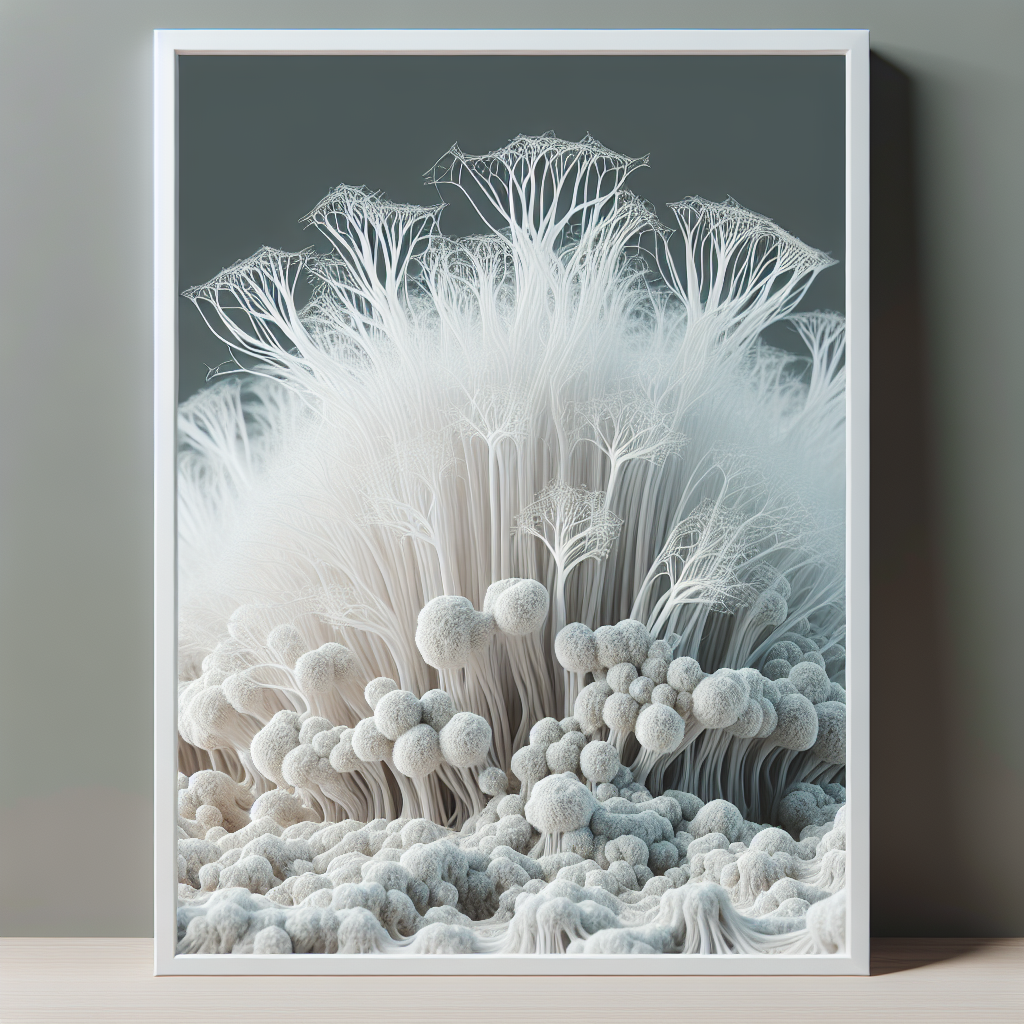As an individual on a quest to procure Mycelium, it is crucial to have a thorough understanding of the buying process, benefits, and potential applications of this unique fungus. This comprehensive guide to buying Mycelium provides you with an intricate overview that illuminates the complexities and simplifies your path. Knowledge is power, and this article has been designed to empower you with up-to-date insights and practical advice so you can make informed decisions when buying Mycelium.
Understanding Mycelium
Before delving into the uses and benefits of mycelium, it’s critical to first understand what it is and the role it plays in nature.
Definition of Mycelium
Mycelium is the vegetative part of a fungus or fungus-like bacterial colony, consisting of a mass of branching, thread-like hyphae. In simpler terms, it is the intricate network of filaments that provide the necessary structure, support, and inputs for mushroom growth.
Role of Mycelium in Nature
Mycelium plays a cardinal part in nature, often described as the ‘natural internet’. It assists in decomposing organic materials such as leaves and bark, aiding in nutrient cycling and carbon sequestration. Mycelium also helps in creating a network of underground connections between different plants, transferring nutrients and creating a symbiotic relationship.
Different Types of Mycelium
Various types of mycelium exist, with each exhibiting distinct characteristics and functionalities. For instance, there’s the saprophytic mycelium, which thrives on decaying material, and parasitic mycelium, which survives by infecting a host. Other types include mutualistic and endophytic mycelium.
Benefits and Applications of Mycelium
Starting from agriculture to health and medicine, mycelium offers a plethora of benefits and practical applications.
Mycelium in Permaculture
In permaculture, mycelium is valuable for its ability to enhance soil health by breaking down complex organic materials and producing humus. Mycelial networks connect different plants, allowing the transfer of nutrients and improving overall biodiversity.
Mycelium for Soil Improvement
Furthermore, mycelium can improve the soil structure, supporting aeration and water retention. This function is beneficial for both plants and soil organisms as it fosters the proliferation of beneficial microbes while enhancing plant growth.
Mycelium in Health and Medicine
In health and medicine, mycelium has been recognized for its various therapeutic properties. It contains molecules that are anti-inflammatory, antibacterial, antiviral, and even antitumor.
Considerations before Buying Mycelium
While mycelium can offer numerous benefits, it’s essential to make an informed decision before purchasing it. This section covers the identification of quality mycelium, determining its suitability for your needs, and safety precautions that must be observed in its use.
Identifying Quality Mycelium
quality mycelium growth is characterized by a rich, white, and dense network of hyphae. If it’s gray or dark, that’s generally an indicator of contamination or poor health.
Determining Suitability for Your Needs
Different strains of mycelium offer differing benefits. Therefore, before purchasing any product, you should ensure it aligns with your specific needs.
Safety Precautions in Using Mycelium
Although mycelium products are generally safe, some people may have allergic reactions. Therefore, when using mycelium, especially as a supplement, it’s a good practice to test your response with a minimal dosage first.

Where to Buy Mycelium
Seeking reliable sources to purchase your mycelium is equally as important as understanding its benefits.
Buying Mycelium Online
The online market offers a wide range of mycelium products. Nevertheless, it’s crucial to conduct an extensive background check on the website and the supplier before making a purchase.
Recommended Physical Stores
Some specialized physical stores sell mycelium. These might include specialty health stores, garden and agricultural suppliers, or natural grocery stores.
Importance of Certifications and Accreditation in Choosing a Supplier
Due diligence is necessary when choosing a supplier. Always look for appropriate certifications and accreditations. Verified suppliers will typically display evidence of high-quality raw materials, responsible manufacturing practices, and product safety.
How to Store Mycelium
Preserving mycelium involves storing it in ideal conditions to maintain its efficacy and shelf-life.
Choosing the Appropriate Storage Conditions
Mycelium should be kept in a cool, dry environment, away from direct sunlight, to maintain its viability.
Long-Term Preservation of Mycelium
For long-term storage, mycelium can be refrigerated, although this might not be necessary if it’s stored properly in a sealed, moisture-free container.
Common Mistakes in Storing Mycelium
Common mistakes often involve exposing mycelium to heat or moisture, which can lead to deterioration or contamination.
How to Use Mycelium
Choosing, preserving, and storing mycelium are only part of the process. Next, is learning how to use it efficiently.
Basic Steps in Using Mycelium
Successful use of mycelium depends on the task at hand. For instance, to improve soil quality, it can be mixed directly into the soil. When used as a dietary supplement, it’s often consumed in capsule form.
Advanced Techniques in Working with Mycelium
In more complex applications, such as mycoremediation (using fungi to clean up contamination), mycelium use requires following specific protocols under controlled conditions.
Troubleshooting in Mycelium Use
Trouble can arise with mycelium not fruiting or growing properly, or showing signs of contamination. Addressing such problems might require changes in environmental conditions, substrate, or even the mycelium strain itself.
Cost considerations when buying Mycelium
Understanding Pricing
Mycelium prices can vary based on the strain, supplier, and overall quality. Be sure to read product descriptions thoroughly and compare prices.
Cost-effectiveness vs Quality
Generally, higher-quality products come at a higher cost, but they also yield better results. Therefore, if your purpose for buying mycelium necessitates quality, it might be worth spending a little more.
Saving Tips when Buying Mycelium
Buying in bulk is often more economical. You can also look out for discounts or sale periods, or even consider growing your mycelium.
Common Mycelium Strains
Out of many mycelium strains available, a few stand out due to their unique properties and benefits.
Top Strains to Consider
Some notable strains are the Ganoderma lucidum (Reishi), Hericium erinaceus (Lion’s Mane), and P. ostreatus (Oyster). Each of these has its own unique health benefits and uses.
Benefits of Different Strains
Each strain of mycelium offers different benefits. For instance, Lion’s Mane is known for its neuroprotective effects, while Reishi is known for boosting the immune system.
Choosing the Right Strain for You
Choosing the right strain involves understanding your needs and expectations from the mycelium. You should also take into account the cultivation requirements of the strain.
Best Practices in Handling Mycelium
Correct handling practices assure the maximum efficacy of mycelium.
Safe Handling Procedures
When working with mycelium, it’s important to keep the working area clean, use sterilized tools, and avoid close contact if you’re allergic or sensitive to fungi.
Preventing Mold and Bacterial Contamination
Preventing contamination involves monitoring temperature and humidity levels, using sterilized substrates, and avoiding direct exposure to non-sterile items.
Maximizing the Efficacy of Mycelium
To maximize the efficacy of mycelium, adhere to recommended doses or usage instructions, store it properly, and choose the correct strain for your needs.
Mycelium Alternatives
While mycelium has many beneficial properties, there exist other products worth considering if mycelium doesn’t suit your needs.
Similar Products to Consider
Products like certain bacterial strains and plant-derived compounds can offer comparable benefits in health, agriculture, and environmental remediation.
Pros and Cons of Alternatives
While these alternatives do have their benefits, they may not offer the same broad-spectrum use as mycelium. However, they could be a better fit depending on your specific needs.
When to Opt for Alternatives
Mycelium may not suit everyone. You may opt for alternatives if you are allergic to fungi, need a more cost-effective solution, or require a product for a specific use that mycelium may not cover.
The journey of understanding, buying, and using mycelium may seem complex. However, if navigated correctly, the potential benefits and applications are worth the effort.
